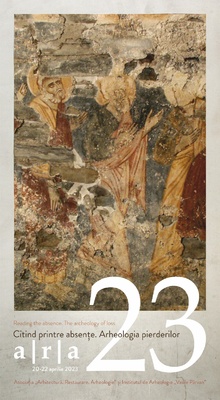 A.R.A. Association, in collaboration with Vasile Pârvan Institute of Archaeology - Bucharest, invites you to the annual "Architecture. Restoration. Archaeology" Symposium and roundtable discussion with the title: Reading the Absence. The Archeology of Loss.
A.R.A. Association, in collaboration with Vasile Pârvan Institute of Archaeology - Bucharest, invites you to the annual "Architecture. Restoration. Archaeology" Symposium and roundtable discussion with the title: Reading the Absence. The Archeology of Loss.The monument stands as witness and information source about the bygone times, being however affected by its passage. Broken, eroded, or destroyed, it survives as disparate fragments. However, as either lost, missing, or fragmentary, the matter of the monument speaks beyond its absence. Researchers can collect clues from monuments or other material artefacts as well as read between the empty spaces of either destroyed or unfinished monuments and objects. They can distinguish between different types of absence and tell if an object or monument had been purposedly broken by a specific tool or by accident, deteriorated in contact with other external agents, or if they are crumbling because of a faulty execution technique or bad choice of materials.
Destruction is, however, ambivalent: it obliterates matter and simultaneously testifies a historic event. The absence can be a proof as strong as presence, while decay can be considered an artefact itself. In the open-air museum of Oradour-sur-Glane, it affirms the trauma and calls for remembering the lost lives. In the village, where life seems to have stopped, decay expands day by day, engulfing the streets, houses and households of the massacred villagers and evoking the absence of the victims.
Furthermore, destruction is something which can be obliterated itself in order to conceal traumatic events. For example, conservation policies of monuments or cities destroyed by war show various approaches in dealing with loss: it can be completely erased by a historically faithful reconstruction or commemorated and marked through symbols, explanatory panels, or by inserting different materials or urban tissues in the reconstruction.
Lastly, destruction can be enacted by those in charge of protecting, studying, and sharing knowledge about the past. For example, the erasure of later historic and contemporary settlement layers is the only way to access ancient heritage. A notorious example is the case of the Ancient Agora in Athens, where the last demolition took place in autumn 2022, and which had been covered by the neoclassical neighborhood of Vrysaki. The controversial expropriation of the inhabitants and radical intervention in the urban structure raise questions about legitimacy of the knowledge obtained through destruction.



